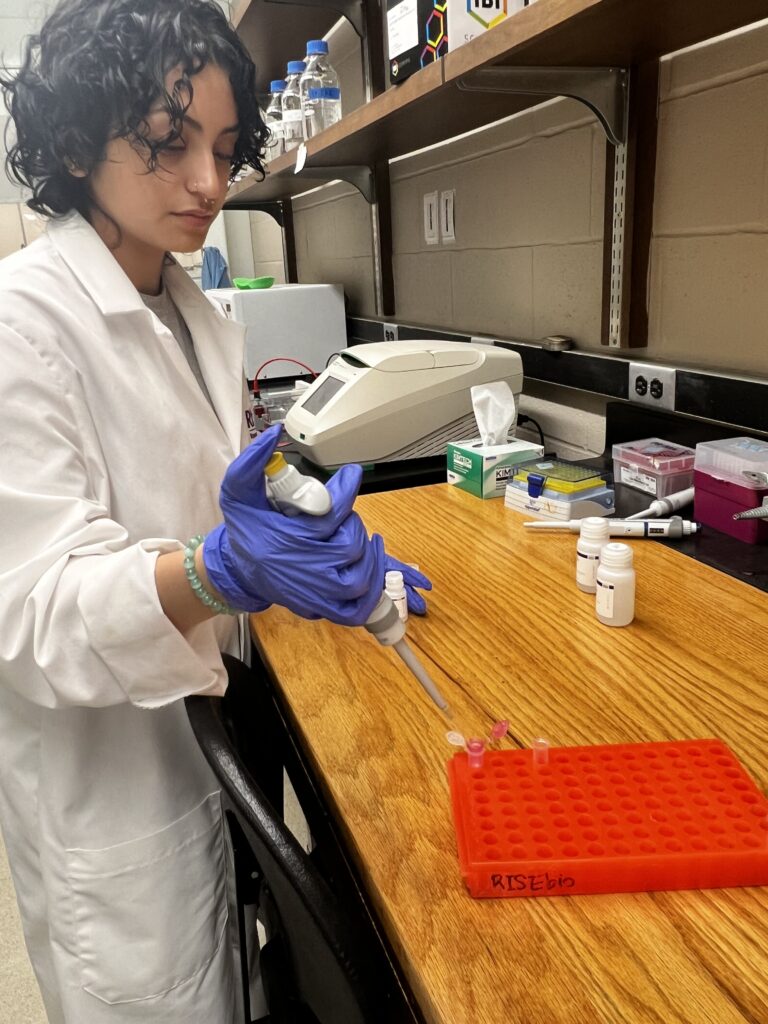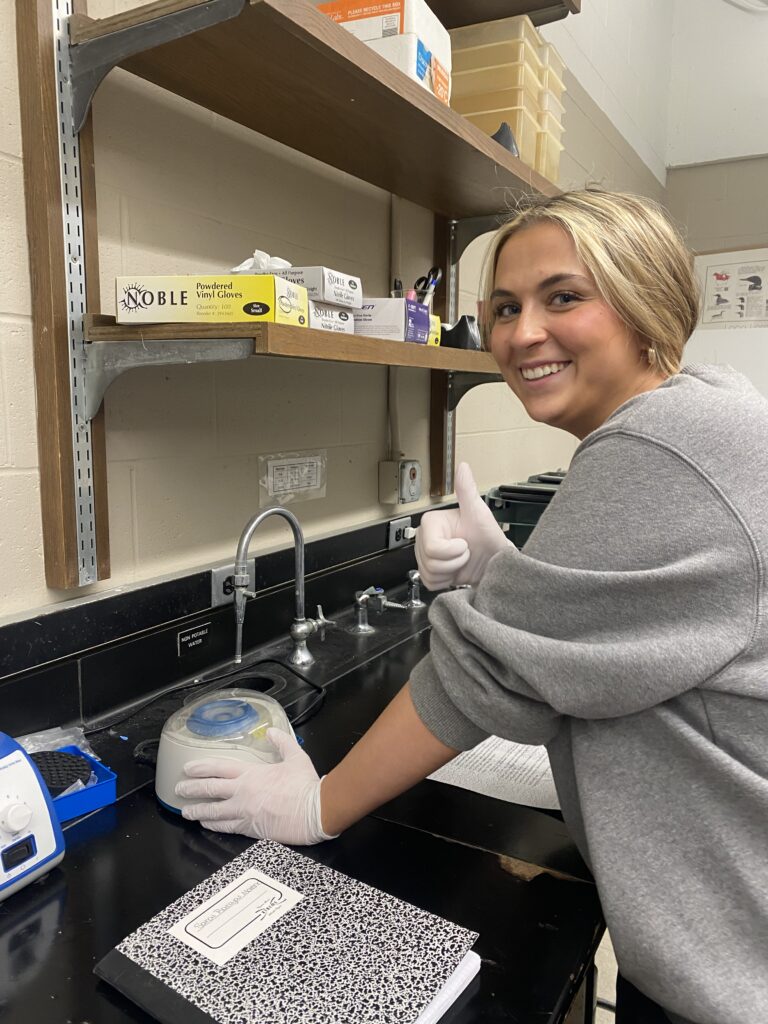24 March 2023
By: Saraí Barajas-Moreno and Georgia Deml
The gene we have continued to research is Phospholipase D (PLD4). We have studied this gene for weeks, creating and developing our own primers to use during our experiment. We performed multiple PCRs and gels that led to our conclusion that our Primer set 2 was our best option. This week in our research, we performed an RNA isolation protocol using green anole lizard liver instead of the brain for practice. We will also be conducting our PCR cleanup later this week.
In our research, we conducted a gel and saw that our Primer set 2 and Primer set 3 worked the best. We ran both primers in their annealing temperatures and concluded that Primer set 2 at the annealing temperature of 58.7°C showed the best results. Last session, we prepared another PCR with Primer set 2 to run another gel since our last gel had signs of contamination.
Before running our PCR cleanup, we practiced an RNA isolation protocol. We used a green anole lizard liver, Liver 8, for our experiment. We learned how to use different tools like the homogenizer, the mini spin column, and the refrigerated centrifuge. Working quickly and efficiently, we transferred a liver sample from the -80°C freezer into a QlAzol filled tube and homogenized it. Continuously running our experiment under the hood due to hazardous chemicals like chloroform and ethanol, we followed the protocol step by step and ended up with our sample that we then stored in the -80°C freezer.
So far, our lab work has run well, even with a few minor setbacks. We have run into the contamination of results and a shortage of time. Even with these setbacks, we still have made great progress and have learned many things along the way. Later this week, we will continue our research by performing a PCR cleanup and finalizing our next steps.



